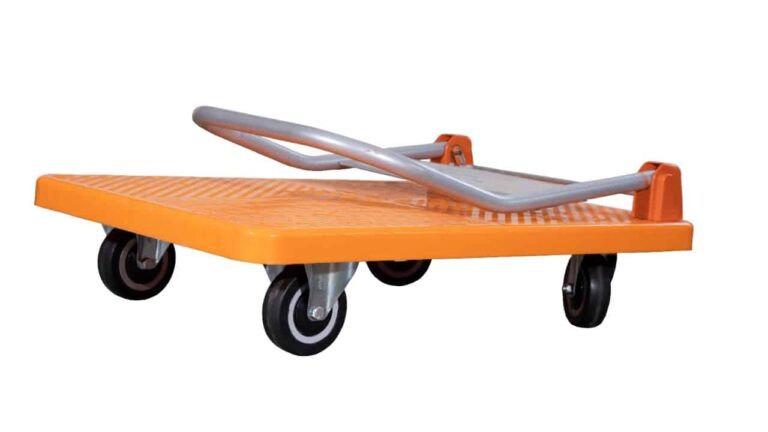Venture into any warehouse, airport, hotel service corridor or retail back-of-house busy with moving cargo and merchandise, and you will discover one deceptively simple device doing that heavy-lifting. the Platform trolleys. Before robots and AI-driven conveyors ever showed up, the unassuming flatbed cart was already helping lower strain injuries, speeding up the pick–pack cycle, and cushioning billable cargo from bumps and drops. Well-designed Platform trolleys are not becoming obsolete but are evolving to supplement automated infrastructure, connecting humans & machines. It be that you own a boutique fulfillment centre or a national logistics operation (think Team Systems), there is a need to know how modern trolley design integrates into workflow software, ergonomic standards, and environmental standards.
A Timeline: Smart Carts from Timber Planks
In the earliest merchant ports granaries and orchards were relocated on hand-built barrows, a basic piece of woodworking consisting of a plank o wooden board fastened between two iron-rimmed wheels to help transfer sacks of grain and crates of fruit. Nineteenth-century industrialization added cast-iron frames, while demand from the automotive factories of the twentieth century pushed the requirements for ever heavier capacities and low-rolling-resistance rubber castors. Australian companies such as Team Systems started standardizing sizes so that deck materials and braking options could be quickly swapped on the production floor. Then powder-coated steel and light-weight aluminium led to food processing and cold-storage models that are corrosion-resistant. Several of the premium Platform trolleys employed by today include a RFID asset-tracking tag, fold-down handle, ideal for loading into a van, and silent polyurethane castors which glide over the polished retail tiles without scuffing. This line diary reveals an intact tradition of simplicity balanced with incremental innovation to keep each iteration of trolley relevant to new handling challenges.
Civil Engineering Basics: Materials, Frames and Deck Forms
A contemporary flatbed trolley consists of much, much more than just a slab of wheeled surface. The torsional rigidity that comes from high-grade welded steel addresses dynamic loads, and aluminium alloys provide similar strength at almost half the weight, which is important in the case of most multi-level warehouses. Composite decks meld recycled plastics with fiberglass strands and wear better than anything else against chemicals and high-pressure washdowns, affording the luxury of quick and easy cleaning in medical or food-grade environments. Platform trolleys intended for external building sites commonly come with galvanized factors or scorching dipped zinc coating for anti-rust as a result of coastal air. Well for that premium hotel feel varnished timber tops bring in a warm aesthetic while inner steel cross-members maintain structural integrity. Finite-element analysis is used by Team Systems engineers to specify deck thickness, wheel diameter, and axle spacing, which ensures that each model meets Australian Standard 3841 for industrial trucks. Matching the right frame–deck combination delivers a reliable, long-life, fit for service asset within your unique operating conditions background, and you can trust that it will deliver year after year by assisting facility managers in developmental and operational efforts.
Final Thoughts: The Workhorse on Wheels is Still Relevant
More than 100 years of gradual development has secured their position as the most adaptable, affordable and ergonomically advantageous material-shifting device out there. They have progressed from basic wooden carts on iron rims to sensor rich, self-driving smart decks, the evolution of smart carts tells the broader tale of industrial engineering, finding a balance between simplicity and innovation. This spirit within the industry is illustrated well by companies like Team Systems, who turn consumer feedback into ergonomically designed, compliant and sustainable products that fit their place in high-tech logistics networks. And, with the rise of e-commerce, the shrinking of urban warehouses, and the demographic shift of labour towards older generations, the need for the lowly flatbed to alleviate fatigue, aid throughput, and preserve product value is only going to grow. With the right sets of spec, strict maintenance regimes and with new digital add-ons coming available, organisations can ensure these wheeled workhorses continue rolling over impressive returns – one effortless push at a time.




